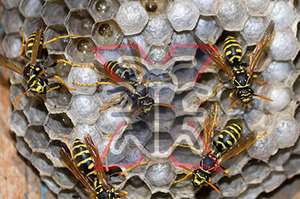How to identify termite so that we can control them?
Body
Termites are often referred to as "silent destroyers" because they can feed on wood, paper, and other cellulose-based materials without showing obvious signs of their presence. Here's how to identify termites and take necessary steps for control:
- Inspect for Mud Tubes:
Subterranean termites, the most common type of termite, create mud tubes that they use to travel from their nests to their feeding sites. These mud tubes are usually brown, about the width of a pencil, and can be found on exterior walls, foundations, and crawl spaces. So get professional Pest control St Clair service.
- Check for Swarmers:
Swarmers, or reproductive termites, are winged individuals that emerge from mature termite colonies to mate and establish new colonies. They are often mistaken for flying ants but can be distinguished by their straight antennae, uniform waist, and equal-length wings. Termite swarmers are attracted to light sources and may be found around windows and light fixtures.
- Listen for Clicking Sounds:
Soldier termites can produce a clicking sound when disturbed, as a warning to alert other members of the colony. While this method might not be easily noticeable, it can be a sign of termite presence.
- Look for Discarded Wings:
After swarmers mate, they shed their wings, leaving behind piles of discarded wings near windowsills, doors, or other entry points.
- Tap and Listen for Hollow Sounds:
Tap wooden structures with a screwdriver or a similar tool. If the wood sounds hollow or papery, it could indicate termite damage. Termites hollow out wood as they feed on cellulose material.
- Examine Wood Damage:
Termites feed on wood from the inside out, leaving a thin layer of wood or paint on the surface. If you notice blistering or peeling paint, tiny holes in wood, or wood that appears to be crumbling, it could be a sign of termite activity.
- Check for Frass:
Dry wood termites expel their waste, known as "frass," through tiny holes they create in infested wood. These pellets are often similar in colour to the wood and can accumulate in piles beneath infested areas.
- Observe Swarming Patterns:
Termite swarming typically occurs during warmer months, often after rainfall. If you notice a sudden emergence of winged insects indoors, especially around windows, doors, or light sources, it could be a termite swarm.
- Inspect Surrounding Landscape:
Termites are attracted to moisture, so be vigilant about addressing moisture issues around your property. Check for leaking pipes, standing water, and excessive mulch near the foundation.
- Seek Professional Inspection:
While these signs can help you identify a potential termite problem, it's recommended to have regular professional termite inspections. Pest control experts are trained to identify termite activity, assess the extent of the infestation, and recommend appropriate control measures.
If you suspect termite activity in your home or property, it's essential to act quickly by seeking professional help. Early detection and appropriate Termite control Sydney measures can save you from significant damage and costly repairs in the long run. To get professional help connect with Inner West Exterminators.







Comments